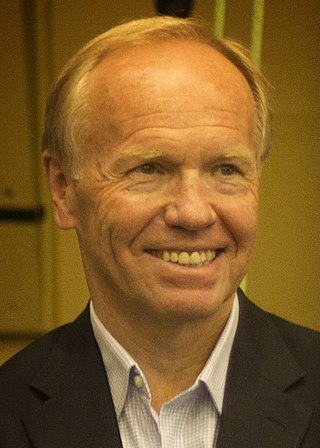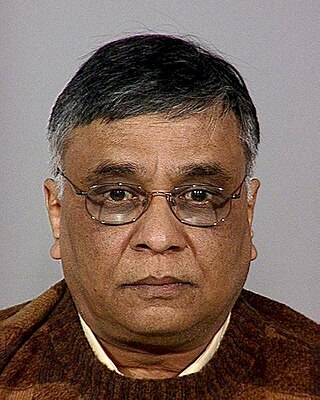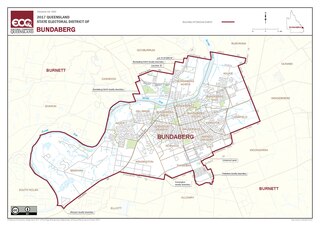
Peter Douglas Beattie is an Australian former politician who served as the 36th Premier of Queensland, in office from 1998 to 2007. He was the state leader of the Labor Party from 1996 to 2007.
One of the six founding states of Australia, Queensland has been a federated state subject to the Australian Constitution since 1 January 1901. It is sovereign, other than in the matters ceded in the Australian Constitution to the federal government. It is a parliamentary constitutional monarchy. The Constitution of Queensland sets out the operation of the state's government. The state's constitution contains several entrenched provisions which cannot be changed in the absence of a referendum. There is also a statutory bill of rights, the Queensland Human Rights Act (2019). Queensland's system of government is influenced by the Westminster system and Australia's federal system of government.

Jayant Mukundray Patel is an Indian-born American surgeon who was accused of gross negligence whilst working at Bundaberg Base Hospital in Queensland, Australia. Deaths of some of Patel's patients led to widespread publicity in 2005. In June 2010, he was convicted of three counts of manslaughter and one case of grievous bodily harm, and sentenced to seven years' imprisonment. In August 2012, all convictions were quashed by the full bench of the High Court of Australia and a retrial was ordered due to "highly emotive and prejudicial evidence that was irrelevant to the case" laid before the jury. A retrial for one of the manslaughter counts resulted in acquittal and led to a plea deal where Patel pleaded guilty to fraud and the remaining charges were dropped. On May 15, 2015, he was barred from practising medicine in Australia.
Gordon Richard Nuttall is a former Australian politician who represented Sandgate in the Queensland Parliament from 1992 to 2006. He was a member of the Labor Party and served as a minister in the Beattie Ministry from 2001 to 2005. In 2009 he was found guilty of corruptly receiving secret commissions during his time in office and jailed for seven years. In 2010, he was found guilty of five charges of official corruption and five charges of perjury and, ultimately, jailed for an additional seven years, the longest jail term for corruption handed to a Commonwealth politician. He was released on parole in July 2015.

Anna Maria Bligh is a lobbyist and former Australian politician who served as the 37th Premier of Queensland, in office from 2007 to 2012 as leader of the Labor Party. She was the first woman to hold either position. In 2017, she was appointed CEO of the Australian Banking Association.
Stuart William Copeland is an Australian politician. He was a National/Liberal National from 2001 to 2009, representing the district of Cunningham.
The Queensland Public Hospitals Commission of Inquiry, often referred to as the Davies Commission, was an inquiry into public hospitals in Queensland, Australia. The inquiry was headed by The Honourable Geoffrey Davies AO QC, a former Supreme Court judge of appeal.

Bundaberg Base Hospital is the public hospital of Bundaberg, Queensland, Australia. Bundaberg Base Hospital was opened by the Governor of Queensland in 1914.

Townsville University Hospital (TUH), formerly TheTownsville Hospital (TTH), is a public tertiary care hospital on Angus Smirth Drive, Douglas, Townsville, Queensland, Australia. It is the largest facility within the Townsville Hospital and Health Service (HHS) geographic area. TUH is the major trauma centre for northern Queensland and all medical and surgical specialties are represented. It provides healthcare across the entire North Queensland region, with patients from as far as Mount Isa and Cape York being airlifted or transported to the hospital on a daily basis. This is the third general hospital to be built in Townsville with construction completed in 2001. The next main tertiary referral hospital is the Royal Brisbane and Women's Hospital in Herston, Brisbane, some 1,375 kilometres (854 mi) distant.
Toni Ellen Hoffman is a senior nurse who was made a Member of the Order of Australia and awarded the 2006 Australian of the Year Local Hero Award. She took on the role of whistleblower in informing Queensland Politician Rob Messenger about Jayant Patel, a surgeon who was the subject of the Morris Inquiry and later the Davies Commission. She originally began to raise doubts about the ability of Patel with hospital management and other staff. Both doctors and surgeons who were familiar with his work had also been deeply concerned.

Bundaberg is an electoral district of the Legislative Assembly of Queensland in central Queensland, Australia. It covers the city of Bundaberg, as well as the immediate surrounding area.

Paul Thomas Lucas is an Australian former politician who served as the Attorney-General of Queensland and Minister for Local Government and Special Minister of State in the Bligh Government and the Member for Lytton from 1996 until his retirement at the 2012 state election. Lucas was a solicitor prior to entering Parliament, and has a bachelor's degrees in Economics and in Law and a Master of Business Administration.

Lesbian, gay, bisexual, and transgender (LGBT) rights in Queensland have advanced significantly from the late 20th century onwards, in line with progress on LGBT rights in Australia nationally. Private consensual sex between men has been legal in the state since 1991, with lesbian sexual acts never criminalised. The age of consent was equalised to 16 years for all sexual acts in 2016. Sexuality and gender identity are protected attributes under both state and federal anti-discrimination laws. Same-sex couples may marry under Australian law, enter into a civil partnership under state law or live together in an unregistered de facto relationship. Same-sex couples may become parents through adoption, foster care, altruistic surrogacy and, for lesbian couples, IVF. In 2020, Queensland became the first jurisdiction within Australia to pass a law banning conversion therapy, with a maximum penalty of 18 months imprisonment and fines. State anti-discrimination protections for sexuality and gender identity were introduced in 2002 and in 2017 the gay panic defence was abolished from the criminal law. Transgender and intersex Queenslanders are able to update their government records and birth certificate, with the formal repeal of both the "divorce requirements" in 2018 and then the "surgery requirements" in 2023.
John Harris Byrne is a retired Australian jurist who previously served as Senior Judge Administrator of the Supreme Court of Queensland. Having been a judge of that court since 1989, he was one of the court's most experienced judges. He was also Chair of the National Judicial College of Australia, a body which provides programs and professional development resources to judicial officers in Australia. He is now a private Commercial Arbitrator.
Justice Henry George Fryberg was a Justice of the Supreme Court of Queensland, Australia.
The Queensland Health Systems Review or Forster Inquiry was a 2005 Queensland inquiry "to undertake a review of the performance of Queensland Health’s administrative and workforce management systems with a focus on improving health outcomes for Queenslanders." It was conducted by Peter Forster who formerly consulted to the Fitzgerald Inquiry.

The Royal Children's Hospital (RCH) was a hospital for children in Herston, Brisbane, Australia. RCH was located next to the Royal Brisbane and Women's Hospital before it was demolished and the land was used to build the Surgical, Treatment and Rehabilitation Service (STARS).
Abortion in Queensland is available on request in the first 22 weeks of pregnancy, with the approval of two doctors usually required for later terminations of pregnancy. Queensland law prohibits protesters from coming within 150 metres of an abortion clinic and requires conscientiously objecting doctors to refer women seeking an abortion to a doctor who will provide one. The current legal framework was introduced by the Palaszczuk Labor Government with the passage of the Termination of Pregnancy Act by the Parliament of Queensland on 17 October 2018 in a conscience vote. Before the Termination of Pregnancy Act took effect on 3 December 2018, abortion was subject to the Criminal Code and the common law McGuire ruling, which made abortion unlawful unless the abortion provider had a reasonable belief that a woman's physical or mental health was at risk. Availability varies across the state, and is more limited in rural and remote areas outside South East Queensland. In the absence of standardised data collection, it is estimated that between 10,000 and 14,000 abortions occur every year in Queensland.
Metro North Hospital and Health Service, known as Metro North HHS or as Metro North Health, is the most populous public health district in Queensland and the overarching health service for the statewide tertiary facility, the Royal Brisbane and Women's Hospital. The service operates several hospitals, dental facilities, and community health services in Brisbane and the surrounds, including the Royal Brisbane and Women's Hospital and The Prince Charles Hospital, and covers the area north of the Brisbane River through to Kilcoy. Metro North Health is part of the Queensland Health system.










